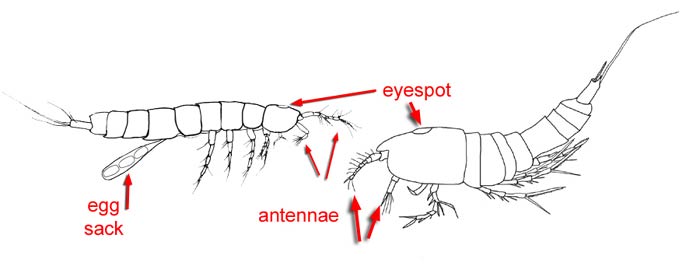| |
-
Copepoda
Common names:
copepods, harpacticoids
Probability of
encounter: high if appropriate extraction techniques used
Quarantine importance:
some species are intermediate hosts of parasites of people, livestock and
wildlife.
Similarity to mites:
small size and obscurity. Abdomen is distinctly segmented.
- Morphology
Normal adult length:
< 2 mm
Body tagmata: head (2 pairs of antennae), thorax, abdomen
Eyes: median eye spot
Antennae: biramous
Mouthparts: mandibles without palps; two pairs of maxillae
Legs: swimming
Respiration: cutaneous
Gonopore: first abdominal segment
Distinguishing features: Minute swimming crustaceans with well developed
antennules and a pair of cerci-like caudal rami.
Comments: Copepods
are normally considered aquatic organisms and would be expected primarily in wet
intercepts (e.g. bromeliads); however, some harpacticoids are inhabitants of
humus.
Diversity:
>7,500 species, mostly marine.
References
Tree of Life - http://tolweb.org/tree?group=Copepoda&contgroup=Crustacea
